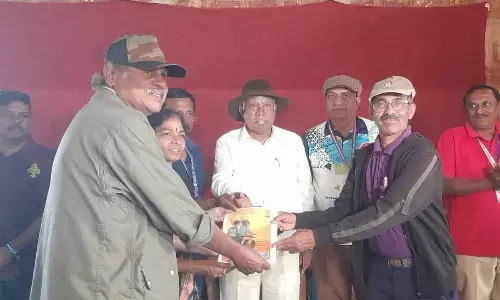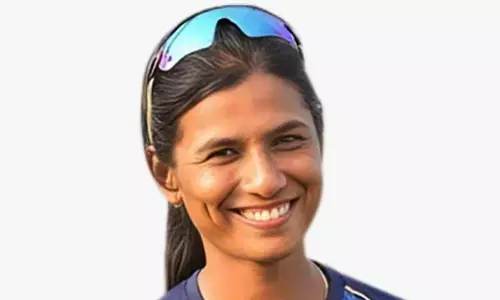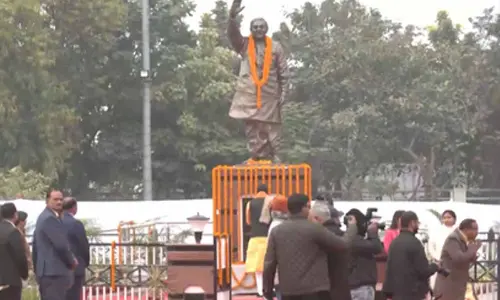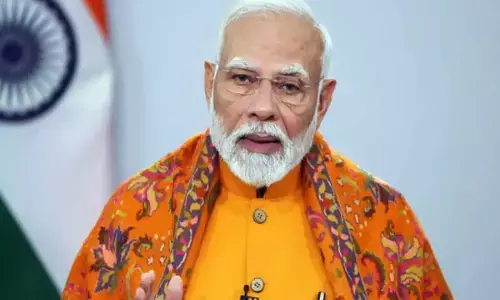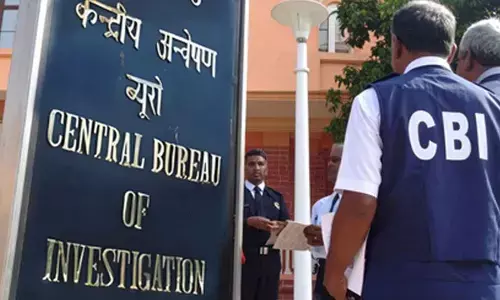The Aghadi faces formidable challenges

The month-long politicking and power sharing is over. Uddhav Raj has begun on a grand note.
The month-long politicking and power sharing is over. Uddhav Raj has begun on a grand note. The oath-taking ceremony was conducted in an extremely grand manner and the Shivaji park resembled a cinema setting resembling the fort.
But the real test for the Aghadi begins now. The biggest challenge before the new government is in handling the farmers woes and providing meals for Rs 10. These were the two main promises made by Sena during elections.
The Aghadi will start governance with a debt burden to the extent of Rs 4,00,0000 crore. The state this season had witnessed unseasonal rains and it is estimated that over one crore farmers were affected.
When in opposition it is easy to make promises but once in the driver's seat, the real problems begin. If the new government must come to the rescue of the farmers and if it has to provide a minimum aid of Rs 10,000 per hectare the government will have to bear a burden of over Rs 9,000 crore. During the previous BJP regime, the centre had offered only Rs 6000 aid to the farmers.
The Aghadi also promised 80 percent jobs to 'Marathi Manoos'. This promise has also been included in the common minimum programme of the trio, Shiv Sena, NCP and Congress party. They propose to bring a law as well.
This is something on the lines of what the YSRCP government had done in Andhra Pradesh. Concept wise it is fine. But what one needs to see is how practical it is in implementation.
Just imagine what would happen to the aspirations and dreams of thousands of Indians who go to US, UK, Australia and other countries for jobs if they too decide to reserve 80 percent of jobs for locals.
In fact, we had seen how a turmoil took place when US President Donald Trump had come up with similar proposal soon after assuming office.
This proposal could also adversely affect any attempt to attract foreign investments. Unless we have necessary talent and skill available where in 80 percent of the job seekers are industry ready, such populist schemes are very difficult to be implemented.
There are other big-ticket projects like bullet train and metro car shed projects. The Sena was never in favour of such projects and speculations are rife that they may exit from the bullet train project.
If that happens, it could affect the brand image of Mumbai which is known as the financial capital of India. Some argue that the air charges between Mumbai and Ahmedabad would be less that the fare of bullet train. Yes, it may be true if one books tickets in advance.
But for those who decide in short notice to travel between Mumbai and Ahmedabad, the fares would be more than that of bullet train. It is wrong to presume that the demand for bullet train would be less.
Take for example the metro trains in the country. The fare is certainly more than that of the city buses operated by road transport corporation but still they are in great demand and are running without losses. Another biggest problem with the regional parties is that in their lust for coming to power, they promise freebies. This is something that needs to be done away with.
The government should provide necessary infrastructural facilities for every individual to be self-sufficient and compete in the global market rather than make them depend on freebies. It may get them votes and power but it causes damage to the nation in the long run.
People should own the country, people should be self-reliant and not dependent. While we hope that the Aghadi would last its full term, the biggest problem which Uddhav Thackrey will have to encounter is sharing power with ideologically different parties. It remains to be seen how the three partners will remain glued and how long.
A lot would depend on how Uddhav wold be handling the alliance. In Khichdi governments, holding together for long generally becomes very difficult unless the lead party adopts the attitude of give and take. In the words of Modi, 'Sab ka Saath'. I don't want to comment on Sab ka Vikas part of the slogan.
Sena has come together for the first time with its arch-rivals, the Nationalist Congress Party (NCP) and the Congress. The Aghadi will have to face a formidable opposition both from the BJP in the state and at centre. This could be a double-edged weapon.
It could help the alliance partners to stay glued or it may fall apart if the BJP succeeds to create ideological differences. Uddhav had always played the role of internal opposition when in alliance with BJP.
How he would handle any issues that may crop up with Congress particularly in regard to the party's stand on Hindutva remains to be watched.
The main responsibility to see that the Aghadi remains intact would fall on Sharad Pawar. But then a lot would depend on how far and how long Uddhav would like to take them since he is new to administration.
Another major question is who will take major political decisions. Will Pawar succeed in maintaining the equilibrium with all the three partners or not would be important factor in deciding the future of the government.
Being new to administration, Uddhav could come up with innovative ideas and there is every possibility that he may do well. But if he focuses more on ideology rather than alliance dharma, then the longevity of the Aghadi would become a big question mark.
In alliances, power sharing always becomes a formidable challenge. Differences generally crop up while taking political decisions. Each party would be thinking on the lines of how they would benefit from the decisions.
Unless Sena can work out a formula of excellent relationship with its partners, glitches in administration are certain to emerge.
Another issue that needs to be watched is what would be the focus area of the alliance government. Will they focus on urban Maharashtra particularly Mumbai or will it be rural outlook.
Will the policies of the government tilt more towards agriculture or industry. Interestingly, all three have agreed on the CMP
The second issue is ideological. While the common minimum programme of the alliance mentions its commitment to secularism, it will have to be seen whether the Sena has indeed moved from its Hindutva outlook and to what extent the partners will adopt a wider view.
Even if the Aghadi sticks to the common minimum programme in letter and spirit, there are many national issues like the National Register of Citizens amendment bill, the Ayodhya issue etc which god forbid could spark differences with Congress party.
The Aghadi has to win the confidence of not only the alliance partners but also the people since they do not have a mandate for such a combination.
Technically and legally, it is certainly a legitimate government but winning over people confidence is more important for them now and that would be possible only if they deliver effectively.












